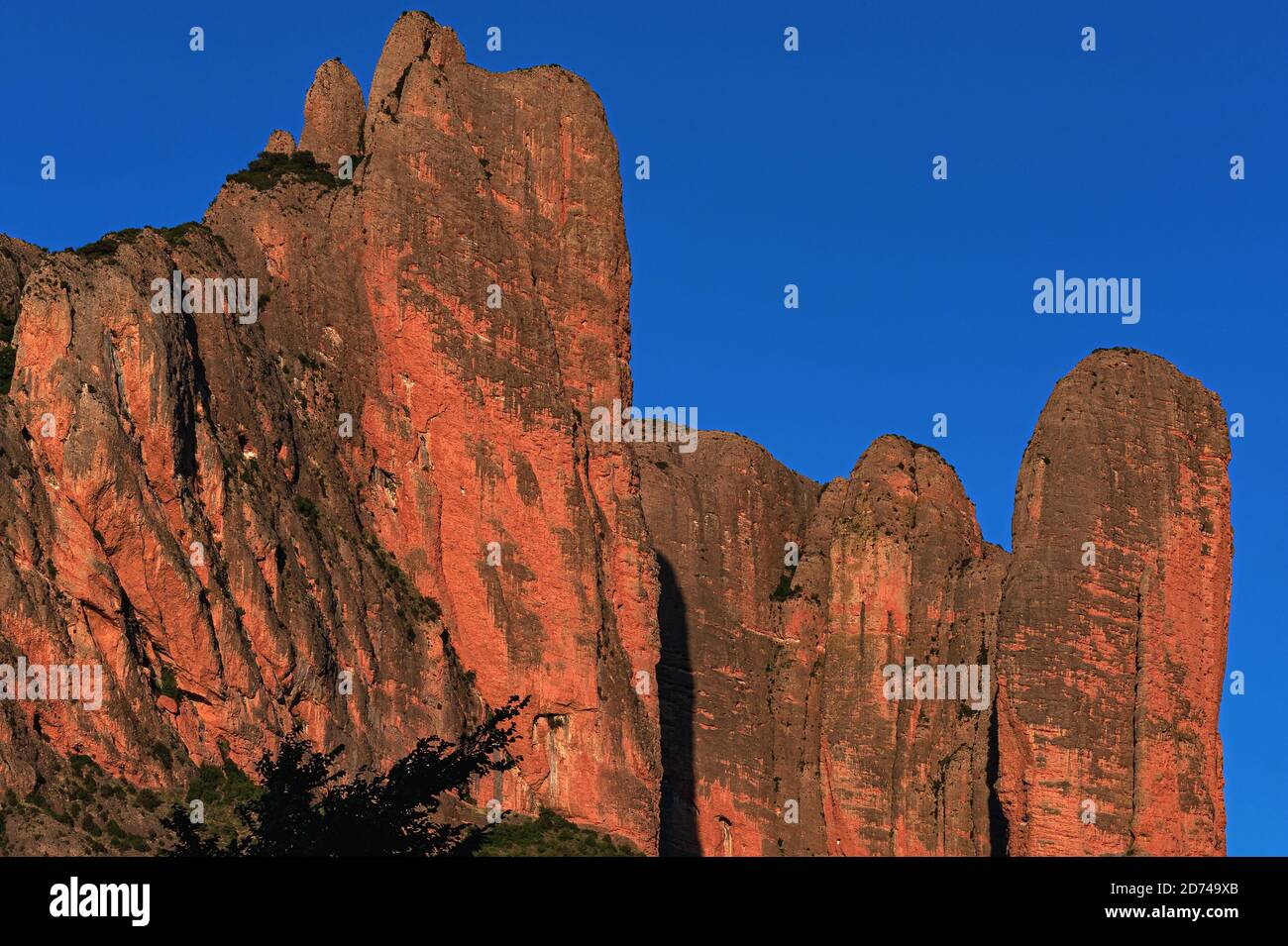The majestic Mallos de Riglos, a spectacular natural gateway to the Pyrenees, glow bright orange-red in evening sunlight in Huesca Province, Aragon, Spain. Los Mallos (The Mallets) formed at least 20 million years ago, when material washed down from Pyrenean slopes compacted with limestone to form conglomerate rock. The distinctive ‘mallets’, sculpted by erosion, are a physical border between the Pyrenean foothills and the Ebro Basin, rising to around 300 m (980 ft). In the 11th century, the Mallos area was briefly an independent kingdom after Pedro, King of Aragon, gave it as a dowry.

Image details
Contributor:
Terence Kerr / Alamy Stock PhotoImage ID:
2D749XBFile size:
34.5 MB (2.3 MB Compressed download)Releases:
Model - no | Property - noDo I need a release?Dimensions:
4256 x 2832 px | 36 x 24 cm | 14.2 x 9.4 inches | 300dpiDate taken:
13 June 2011Location:
Los Mallos de Riglos, Huesca Province, Aragon, SpainMore information:
This image could have imperfections as it’s either historical or reportage.
Los Mallos de Riglos, Huesca Province, Aragon, Spain: these majestic rock formations, a spectacular natural gateway to the Pyrenees, glow bright orange-red in evening sunshine before turning paler red as the light fades. Los Mallos (The Mallets) were formed at least 20 million years ago, early in the Miocene Epoch, when eroded material washed down from Pyrenean slopes became cemented together by limestone. Over time, the mixture compacted into conglomerate rock and the distinctive ‘mallets’ were formed by erosion wearing away the rock’s softer, more porous parts. Geologically, the Mallos form a distinct physical border between the Pyrenean foothills and the much flatter Ebro Basin. The Mallos rise to about 300 metres (980 feet) and to an elevation of 1, 045 m (3, 428 ft) above sea level. Their near-vertical sides and rugged trails attract climbers, hikers, wildlife enthusiasts and birdwatchers from all over the world. The Mallos are home to many colonies of griffon vultures that can be seen soaring and cruising on thermal air currents caused by the south-facing cliffs. Despite its popularity, the Los Mallos area is dotted with traditional villages and has little tourist infrastructure. In medieval times, after the 11th century King of Aragon, Pedro or Peter I, gave it as a dowry to his second wife Bertha, it was briefly an independent kingdom, and it is still known as ‘el Reino de los Mallos’ (the Kingdom of the Mallos). D1191.B4219